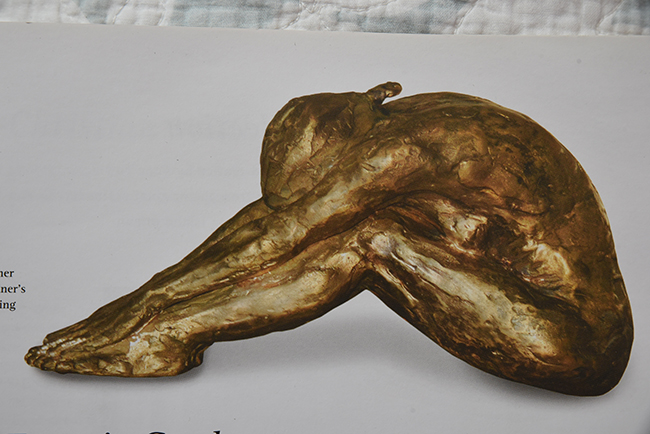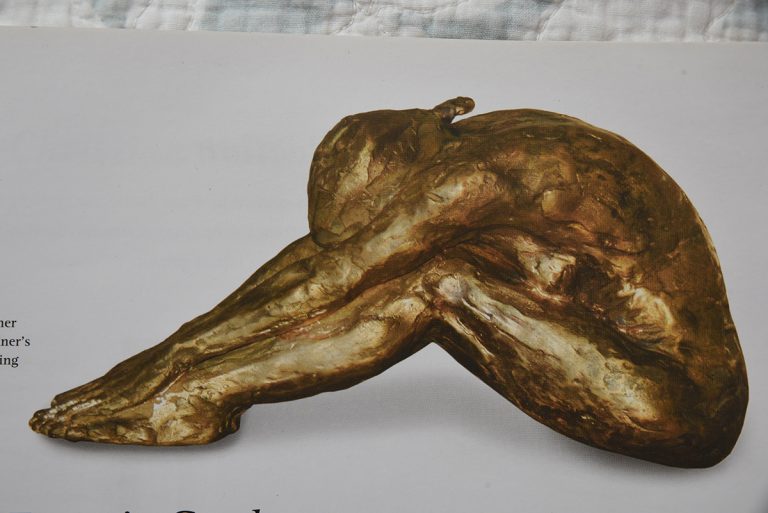By Moaviya E
John Gardner’s journey into sculpture is as textured and layered as his bronzes. He is a storyteller with clay and metal, capturing more than just the physical likeness of his subjects. His sculptures radiate warmth and humanity—qualities he believes history should remember alongside the achievements of remarkable individuals. Gardner approaches his work with a deep understanding of form and emotion, using the weight and permanence of bronze to preserve fleeting human expressions and gestures. His process is meticulous, yet his work retains a raw, organic quality that makes each piece feel alive.
One such work is Emma Bronze, a limited edition of 15. The piece started in clay before being cast in bronze using the lost wax method, an ancient technique that allows for precise detail while preserving the artist’s hand in the final form.
At first glance, Emma Bronze has an immediate presence. The figure is curled forward, a position both vulnerable and strong. There’s a sense of surrender in the pose, but also resilience. Gardner isn’t concerned with idealizing the human body; instead, he captures it as it is—organic, imperfect, deeply expressive. The bronze surface, with its varied patina, catches light differently from every angle, enhancing the contours of the form.

The lost wax method gives Emma Bronze an added layer of intimacy. Every fingerprint left in the original clay, every ridge and indentation, translates into the final bronze. It’s a process that has remained largely unchanged for thousands of years, but Gardner makes it feel fresh. His approach isn’t about rigid perfection; it’s about allowing the material to carry the history of its making.
The edition of 15 keeps Emma Bronze exclusive but not unattainable. Gardner often works in limited series, ensuring each sculpture retains a sense of individuality while being part of a select collection. Each cast carries subtle variations in patina, making every piece unique.
What stands out about Emma Bronze is how it invites the viewer to connect on an emotional level. The pose suggests introspection, perhaps exhaustion, but it isn’t just about a moment of weakness. There’s a quiet strength in the way the figure folds into itself. The sculpture doesn’t tell you what to feel—it simply exists, leaving space for interpretation.
Gardner’s work often revolves around the human experience, distilling emotions into physical form. Emma Bronze is no different. It doesn’t rely on grand gestures or exaggerated movement. Instead, it focuses on something quieter: the power of stillness, of weight, of being present.
There’s also a tactile quality to Gardner’s bronzes that makes them compelling in person. The roughness of certain areas contrasts with the smoothness of others, a reminder that the piece was once shaped by hand. This balance between control and spontaneity is what makes his work so engaging. He isn’t just sculpting a figure; he’s preserving a moment, a feeling, a presence.
Emma Bronze is a work that doesn’t demand attention but holds it. It’s understated yet powerful, a testament to Gardner’s ability to communicate through form. The limited edition ensures that the piece remains special, a quiet meditation in bronze that speaks to anyone who takes the time to look.

